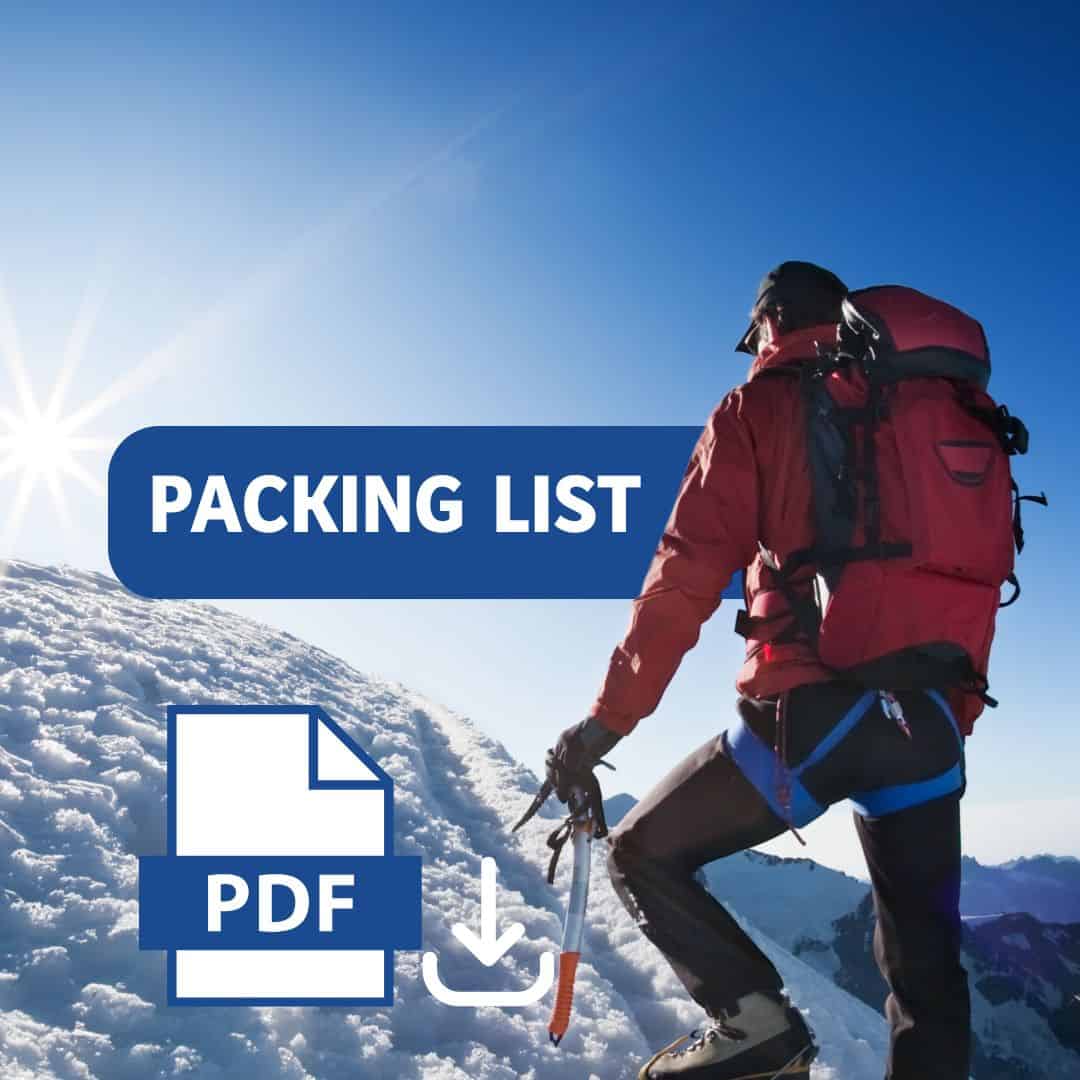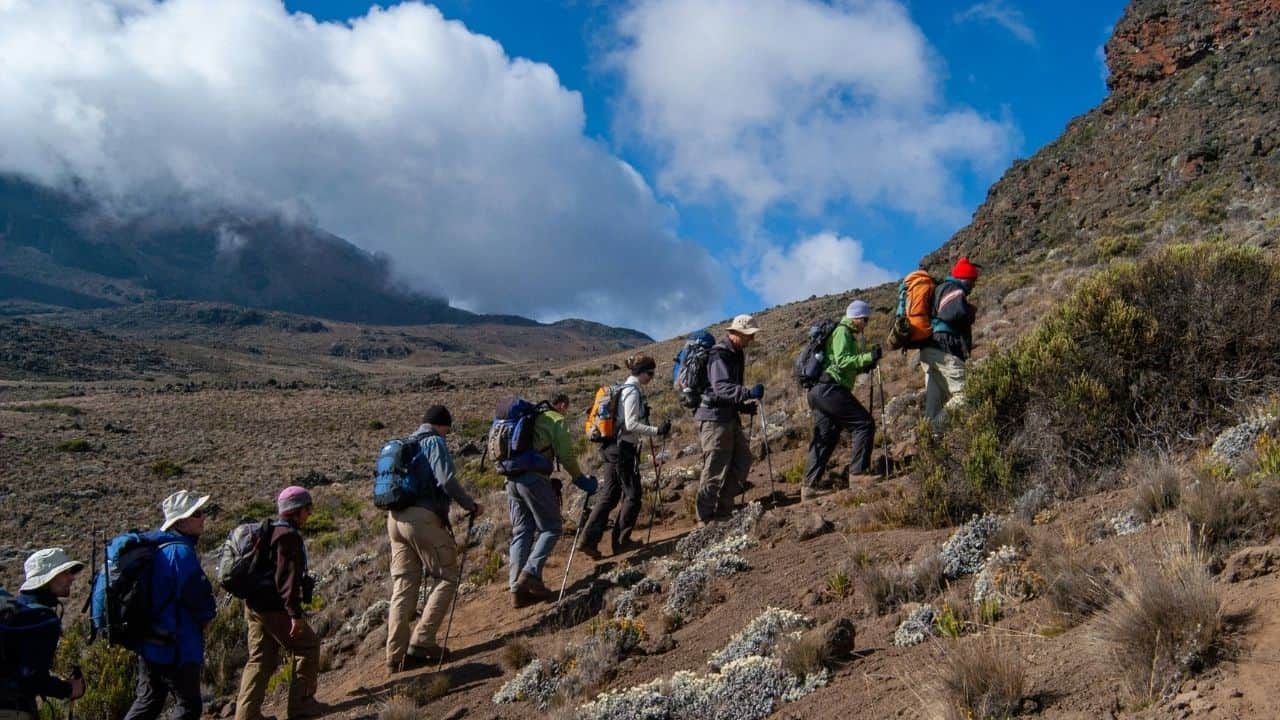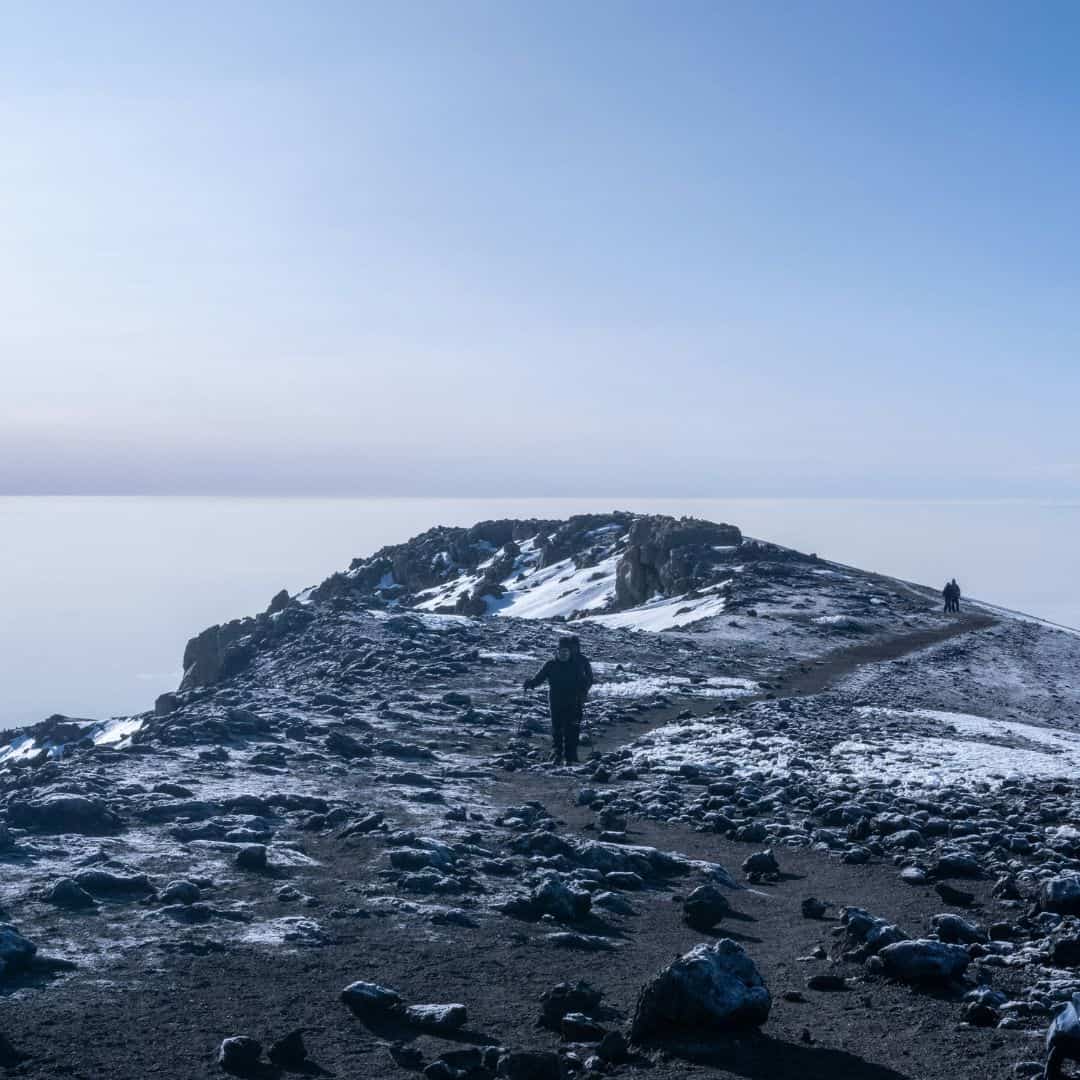
Overview of the Lemosho route
The Lemosho route has become one of Kilimanjaro’s most favored trails—and rightfully so. It offers breathtaking landscapes, a strong acclimatization profile, and some of the highest summit success rates among all available routes. Starting from the mountain’s western slopes, Lemosho can be completed in 6, 7, or 8-day itineraries. One of its highlights is Cathedral Peak, a striking point on the Shira Plateau that rises to 3,872 meters (12,703 feet), perfect for an acclimatization hike with stunning views. Trekkers will also encounter the rare and otherworldly Dendrosenecio kilimanjari, a giant plant species found only on Kilimanjaro. This was the route taken by Angela Vorobieva, who, at age 86, reached the summit with Utalii Travel, setting a Guinness World Record as the oldest person to climb the mountain.

Get PDF Kilimanjaro Packing List
Free Kilimanjaro Packing List with gear necessary for the hike and recommendations from Utalii experts.
Lemosho Route Detailed Itinerary
Day 1: Arrival
Arrival at Kilimanjaro International Airport (JRO), where a Utalii Travel representative will be waiting to welcome you and arrange your transfer to the hotel included in your package. Your hotel stay is designed for comfort, offering well-appointed rooms, hot showers, friendly service, a swimming pool, and internet access. In the evening, you’ll attend a pre-climb briefing with our team, who will ensure you’re fully prepared for the adventure ahead.
Private tour packages include shared airport transfers for your group. If individual transfers are required, additional charges may apply. To avoid extra costs, we recommend coordinating your group’s arrival and departure times.
Please note: Hotel check-in is available from 2:00 PM.
Day 2
A mountain guide and support team will meet you at your hotel to begin the journey. You’ll then travel by vehicle for approximately 3–4 hours to Londorossi Gate, located on the western side of Kilimanjaro National Park. After completing the necessary formalities—such as obtaining permits and registering with the park’s search and rescue service—you’ll continue by off-road vehicle to your drop-off point at an elevation of 3,414 meters (11,200 feet). From here, you’ll enjoy your first sweeping views of the Shira Plateau.
The hike from the drop-off point to your first high-altitude campsite at Shira 2 involves a moderate ascent and is not physically demanding, making it ideal for beginning the acclimatization process. By the time you arrive, your mountain crew will have set up the camp and started preparing dinner.
Please note:
This will be your first night at high altitude. It is important to follow these recommendations:
Drink at least 4 liters of bottled water throughout the day in small, frequent sips.
To minimize altitude sickness, consider using preventive medications such as high-altitude aid tablets. These are often taken in the morning before trekking. Consult your doctor before the trip to ensure they are suitable for you.
Some discomfort, including headaches and nausea, may occur at night due to reduced oxygen levels while sleeping. Always monitor how you feel and inform your guide if you experience symptoms of altitude sickness.
Trekking Time: 5–6 hours
Distance: 11 km (6.8 miles)
Day 3
Trek from Shira 2 Camp to Lava Tower, then Descend to Barranco Camp
After breakfast, the trek begins from Shira 2 Camp toward one of the key points of your journey — Lava Tower, situated at an altitude of 4,600 meters (15,091 ft). This stretch includes several ascents and descents and may present some physical challenges. It’s normal to feel the effects of high altitude here, but spending 1–2 hours at Lava Tower is essential for proper acclimatization. Lunch will be served at this point.
After your break, the route descends to Barranco Camp, located in a scenic valley beneath the majestic Barranco Wall. Though the wall appears steep and imposing, the path you’ll take up it tomorrow is straightforward and manageable, requiring no climbing experience.
Trekking Time: 6–8 hours
Distance: 12 km (7.4 miles)
Day 4
Today begins with an early wake-up and a hearty breakfast before tackling the Barranco Wall. It’s recommended to start early to avoid congestion from other groups. Although the wall looks daunting, the climb is straightforward and typically takes about an hour. Once at the top, you can take a well-deserved break and enjoy panoramic views of the Kibo volcano.
Afterward, you’ll continue on a more demanding trek to Karanga Camp, with several ascents and descents along the way. Our experienced guides will ensure a steady, manageable pace for the group. Upon arrival, a warm lunch will be served. Later in the afternoon, you’ll embark on an acclimatization hike toward Barafu Camp, gaining about 300 meters (984 feet) in altitude before returning to Karanga for the night.
Note: Acclimatization hikes are a crucial part of your Kilimanjaro success. Though gentle, they help your body adjust to the altitude and reduce the risk of altitude sickness. Take them seriously—they play a big role in a safe and successful summit.
Day 5
After enjoying a warm and energizing breakfast, you’ll set out on the trek to Barafu Summit Camp—the final base before your night ascent to Uhuru Peak (5,895 m / 19,340 ft), the highest point in Africa. The hike to Barafu is steady, and upon arrival, your camp will already be set up by our crew. Your tent and sleeping arrangements will be ready, allowing you to immediately relax and begin conserving energy.
We recommend spending the rest of the day resting and getting as much sleep as possible in preparation for the demanding summit climb that begins around midnight.
Trekking time: 4–5 hours
Distance: 6 km (3.7 miles)
Day 6
You will begin your final ascent from Barafu Camp around midnight, aiming to reach the summit of Uhuru Peak (5,895 m / 19,340 ft)—the highest point on Kilimanjaro. While the trail is not technically difficult, the high altitude makes the trek physically demanding. To ensure your safety, each pair of climbers will be accompanied by a personal guide who will monitor your condition throughout the climb.
After celebrating your successful summit at Uhuru Peak, you may choose to descend briefly to a nearby glacier before heading back down to Barafu Camp. Following a short rest of about two hours, the descent continues to Millennium Camp for an overnight stay.
PLEASE NOTE: Most climbing accidents happen on the way down, not up. Be cautious during the descent and take care of your footing—especially to protect your toenails, which are prone to injury due to the steep descent.
Trekking time: 8–12 hours
Distance: 15 km (9.3 miles)
Day 7
Trekking time: 4–5 hours
Distance: 12 km (7.4 miles)
Day 8
Relax at the hotel before your transfer to the airport.
Please note: Hotel check-out is at 11:00 AM. If your flight is in the evening and you require a late check-out, this can be arranged for an additional fee.
Planning Kilimanjaro Climbing?
Our team is always here to help
Park entrance and climbing permits
Rescue and evacuation fees
Services of professional mountain guides, porters, and cooks
All camping equipment (tents, sleeping mats, dining tents)
Meals and bottled water during the trek
Transfers from/to Kilimanjaro International Airport and hotel
Accommodation before and after the climb (usually in Arusha or Moshi)
International and domestic airfare
Visa fees for Tanzania
Personal trekking gear (boots, clothing, sleeping bags, trekking poles, etc.)
Travel and medical insurance (highly recommended)
Tips for guides, porters, and support staff (usually $20-$30 per day per group)
Meals and drinks in town before and after the trek (except those provided during the climb)





